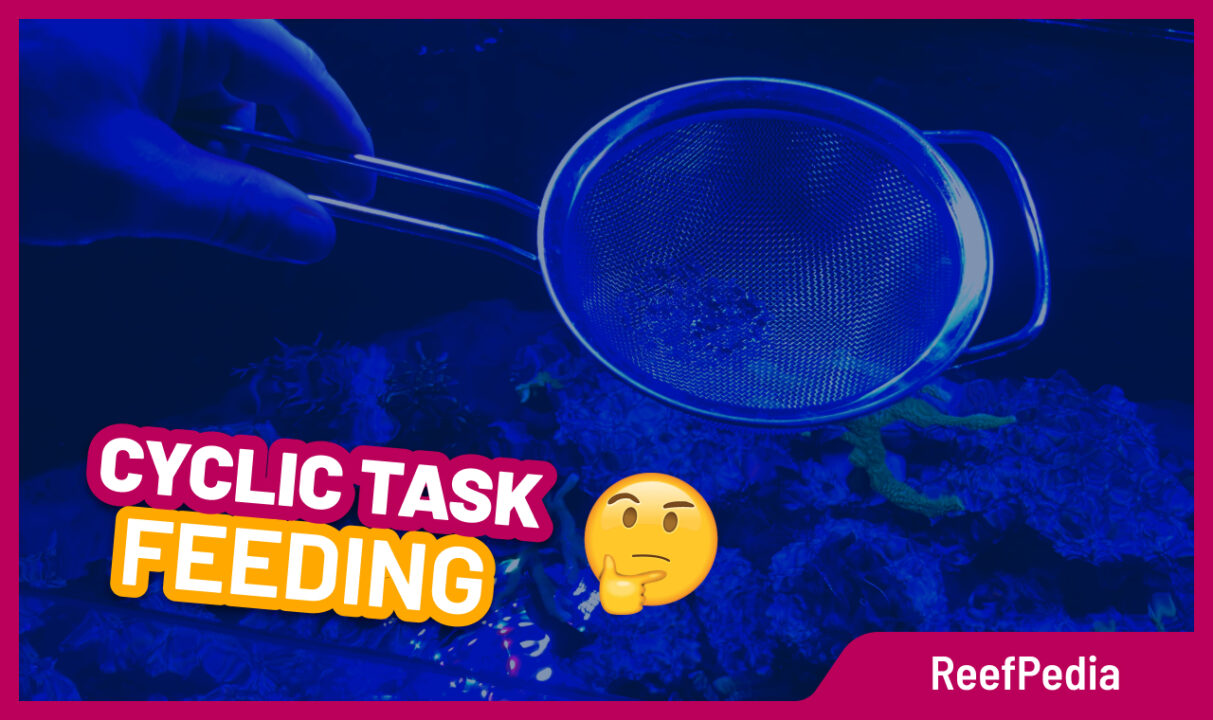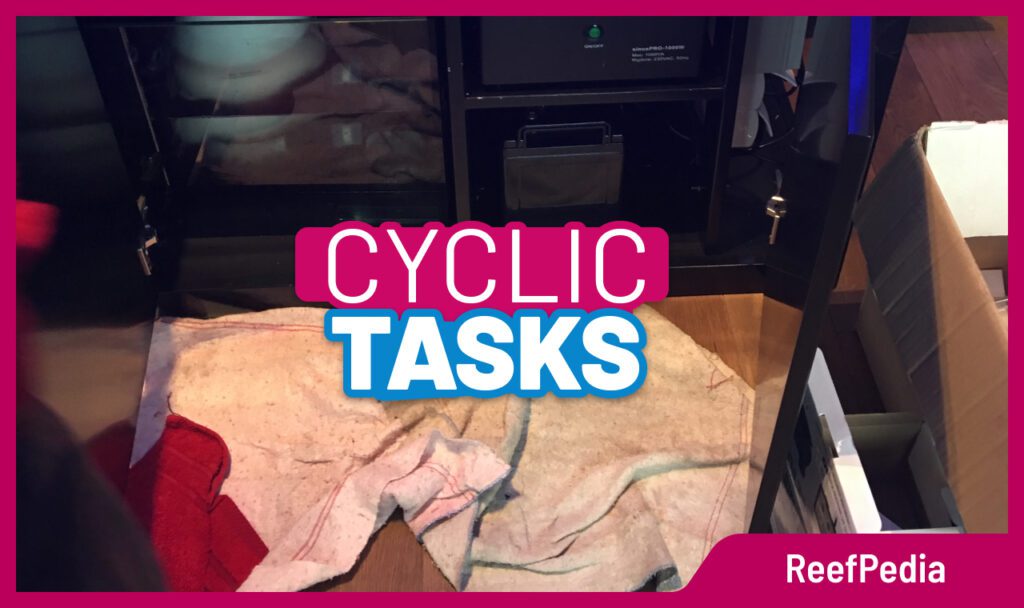Table of Contents
This article is part of the “Cyclic tasks” series, intended for beginner aquarists who are looking for the basics of running a saltwater aquarium, or for those who are considering setting up a tank and want to understand the amount of work involved.
In order for the aquarium to function properly, we must regularly undertake certain works. If you’re a beginner aquarist, you’ve come to the right place!
Fish feeding
We have dry, frozen and live foods at our disposal. When to choose what? There’s no golden rule here. Animals have the most fun with live food, but due to the availability, such food is used rather sporadically. Most pollution in the water is caused by dry food. After feeding with dry food, PO4 and sometimes zinc will increase, so you should pay attention to these two parameters. Dry food is most often used when we’re away from home – then we can use an automatic feeder. Nori algae is an example of foods that we use often and, when dosed in the right amounts, doesn’t significantly affect the purity of water.
Using frozen foods
Frozen foods are the most common type of marine food. There are a few rules that we should stick to in order to properly feed frozen food to animals. Read on to find out more.
We take out the frozen food into a special container, it can be a small, fine strainer or a dedicated container. Frozen food in this container must thaw. After thawing, rinse it with RO water. Only then do we feed them to the fish.
Do not throw unthawed or unrinsed food into the aquarium. If we do this, we will increase the PO4 level. The exceptions are situations when we specifically want to raise the PO4 in the tank.
Another small hint is that we give as much food as the fish can eat. The food should not sink to the bottom.
We will have a little more fun if we keep Mandarin and Chelmon in the aquarium, which we want to feed with frozen food. However, this is not a topic suitable for beginners, so more information on the more advanced feeding can be found in the section dedicated to fish.
Coral feeding
Coral feeding is a little more complicated. The topic has been described in more detail in the article: Coral feeding
We must remember that different types of corals will require a special way of feeding. We have 4 types of corals: soft, LPS, SPS and non-photo.
While soft corals don’t need special feeding, as NNO3 and PO4 from the water are enough for them, LPS corals like to be fed with frozen food – preferably at night. If we ever decide on non-photosynthetic corals, we will also have to feed them with frozen food. SPS corals like amino acids and the right level of NO3 and PO4.
Summary
In this article, the topic of feeding animals has been introduced to beginners in a very general way. I invite you to expand your knowledge on this subject using the materials available on ReefPedia.
About the author

Marek Protasewicz
Reefkeeping has been my passion for over 10 years now. I love learning. The hobby has taught me many valuable lessons, patience being the best example. Combining work and passion is my path. I run Crazy Coral, a marine aquarium shop, for a number of years. Building this business from the scratch I learnt from my own mistakes at a heavy cost.
Later I managed a project aimed at development of methods for quick growth of Corals in non-natural conditions. The project was carried out by Get Sales, Poland. Presently, I am responsible for distribution strategy at Reef Factory, of which I am a co-founder. The company produces smart devices for marine aquaristics. The last projects I have been involved in are Social Reef and ReefPedia.




